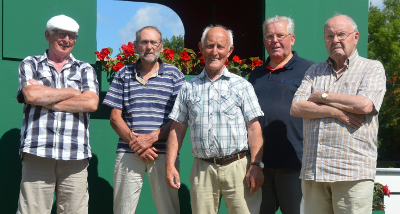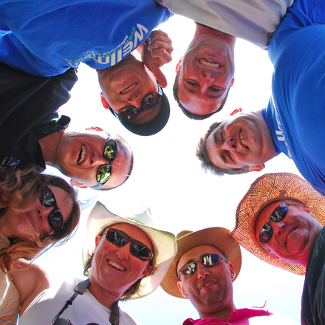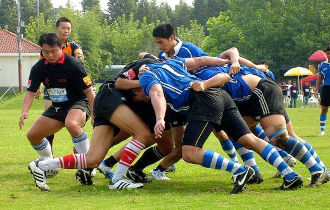Scrum teams, when properly assembled and maintained, have been shown to increase developer productivity and satisfaction. Scrum teams that work are small, co-located, dedicated, stable and cross-functional. These elements are essential in working in the complex world of software development. Recently, I stumbled across another reason that may explain the gains found on proper scrum teams – friendships.
 In his book, The Best Place to Work: The Art and Science of Creating an Extraordinary Workplace, Ron Friedman explains that there is a strong correlation between employee engagement and whether an employee has a best friend at work. It is important to note that employee engagement and employee happiness is directly tied to employee productivity. Additionally, engaged employees also exhibit increased focus, passion, loyalty, spend less time off the job being sick, suffer fewer job-related injuries and have less turnover. In other words, there is an excellent business case to be made for keeping employees engaged through facilitating friendships.
In his book, The Best Place to Work: The Art and Science of Creating an Extraordinary Workplace, Ron Friedman explains that there is a strong correlation between employee engagement and whether an employee has a best friend at work. It is important to note that employee engagement and employee happiness is directly tied to employee productivity. Additionally, engaged employees also exhibit increased focus, passion, loyalty, spend less time off the job being sick, suffer fewer job-related injuries and have less turnover. In other words, there is an excellent business case to be made for keeping employees engaged through facilitating friendships.
Of course, this begs the question of how companies can facilitate friendships. According to Friedman, there are three basic things that are necessary to foster friendships; physical proximity, familiarity and similarity. It is interesting that these are things that a properly assembled and maintained scrum team will nurture. Physical proximity is analogous to co-location. We find it difficult to bond with people who we are not physically close to. Familiarity can be gained with small teams that are kept together over time. Similarity is found in keeping the people dedicated to the effort over time. In fact, studies have shown that it takes about a year of occasionally working together to transition from acquaintance to friend, so I would recommend that it takes about four to six months of scrum team experience to achieve this friendship level.
 There are two additional levels of friendship that have been studied, namely, the transition from friend to close friend and from close friend to best friend. According to Friedman, the cement that bonds friends even closer together is “a foundation of shared risk” and the ability to “reveal our vulnerabilities.”
There are two additional levels of friendship that have been studied, namely, the transition from friend to close friend and from close friend to best friend. According to Friedman, the cement that bonds friends even closer together is “a foundation of shared risk” and the ability to “reveal our vulnerabilities.”
And how is this related to Scrum? I think there are two things that could allow Scrum to facilitate these deeper bonds of friendship. The first is the retrospective. When this ceremony is done correctly, it challenges people to honestly confront issues that the team is having and the sessions can be intense, but the experience of frankly sharing can certainly increase the bonds between team members. The second thing I think could play an important role is the last aspect of a good scrum team, cross-functionality. While this may seem a stretch, my own experience with teams is that when individuals are encouraged to work in areas outside their primary focus, they increase their feeling of vulnerability. It also forges greater bonds because a person has more opportunities to support their friends and contribute to the team.
 Scrum is a difficult challenge at many companies because they continue to have trouble creating scrum teams with characteristics shown to work optimally. These five characteristics are size (small), co-location, dedication, stability and cross-functionality. These are the things that are essential in combating complexity, but it appears they are also necessary to building lasting and close friendships. Perhaps one of the reasons that properly assembled scrum teams are so successful is that when you keep them together, close friendships are established and this has been shown to increase productivity and reduce turnover. I think that this needs to be taken into account when we assess our all too prevalent reliance on temporary workers and temporary project teams. Perhaps temporary teams do not function as well because we have not given people the time (and space) necessary to form friendships.
Scrum is a difficult challenge at many companies because they continue to have trouble creating scrum teams with characteristics shown to work optimally. These five characteristics are size (small), co-location, dedication, stability and cross-functionality. These are the things that are essential in combating complexity, but it appears they are also necessary to building lasting and close friendships. Perhaps one of the reasons that properly assembled scrum teams are so successful is that when you keep them together, close friendships are established and this has been shown to increase productivity and reduce turnover. I think that this needs to be taken into account when we assess our all too prevalent reliance on temporary workers and temporary project teams. Perhaps temporary teams do not function as well because we have not given people the time (and space) necessary to form friendships.
